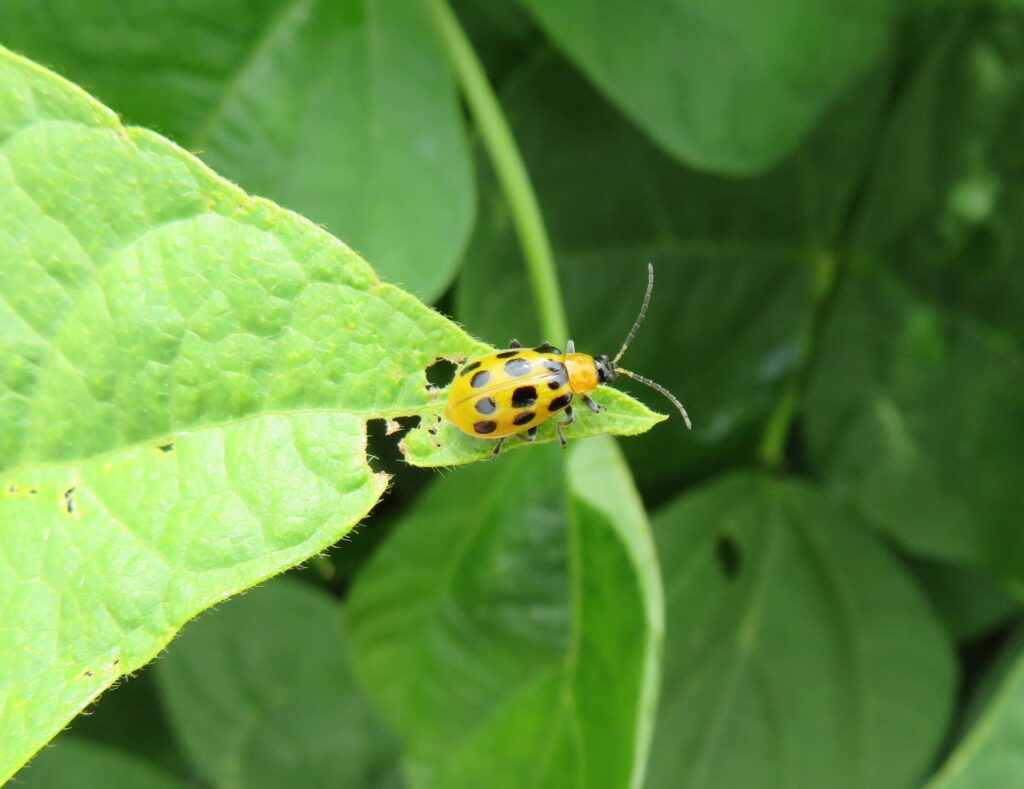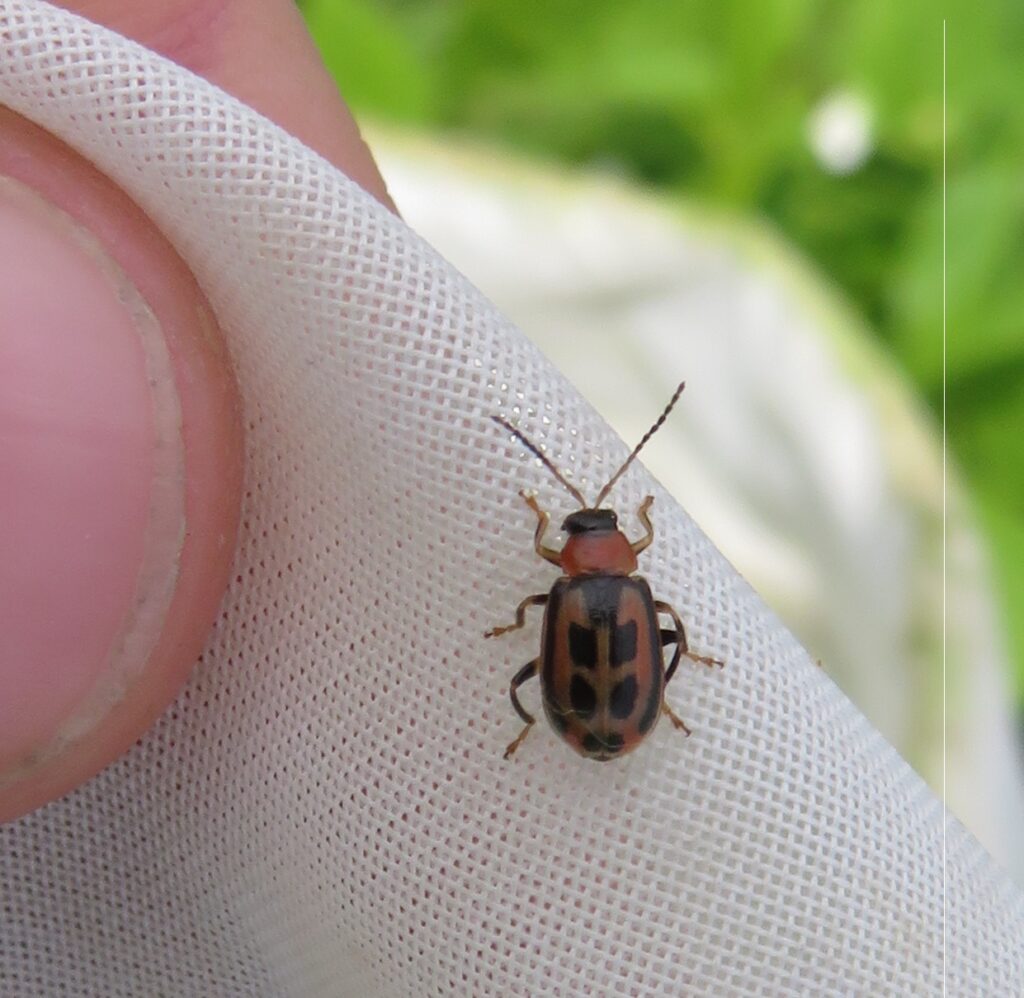BEAN LEAF BEETLE (Certoma trifurcata)
Description
The bean leaf beetle (BLB) adult is approximately 5 mm (0.2 in.) in length and may or may not have four black parallelogram shaped spots found on the wing covers. Adult beetles can vary in colour but are most often yellow-green, tan or red. All have a small black triangle at the junction where their wings are attached. The margins of the wing covers have a black border.
Larvae can be up to 10 mm (0.4 in.) in size and are white with a brown head and three pairs of legs. They look very similar to corn rootworm larvae, having dark colouration at both ends of the larvae but like rootworm, are very difficult to find and are rarely seen.
The bean leaf beetle is often confused with the spotted cucumber beetle or lady beetles. A small black triangle is visible at the base of the wing covers (behind the head) of the bean leaf beetle.


Life Cycle
There is one generation of BLB per year, not including the overwintering population that enters the soybean crop from their overwintering sites in early spring. The BLB overwinters in the adult stage in woodlots, grassy edges of fields, leaf litter and soil debris. In late-April, when temperatures reach 10⁰C, the overwintering adults become active and begin feeding on nearby alfalfa fields until the first cutting of alfalfa or early planted soybeans emerge. Mated females then lay lemon-shaped, orange-coloured eggs in small clusters in the soil at the base of the soybean and legume plants. Egg-laying occurs until mid-June.
There is a distinct period between the end of June to mid-July when there is little to no adult activity in the field, since most of the population is now in the egg and larval phase. Newly hatched larvae feed on roots and other underground plant parts for about 30 days before pupating. The first generation adults begin to emerge from the soil in early July to mid-August and feed on foliage and pods until the plants senesce. The adults then migrate to alfalfa fields, if available, or move to their overwintering sites.
Damage and Scouting
BLB can feed on leaves causing defoliation in dry edible beans, but it rarely reaches threshold levels that requires management in dry beans. See Table 1 for leaf defoliation thresholds.

Table 1. Defoliation Threshold for Dry Beans
| Bean Growth Stage | Defoliation Threshold |
| Prior to bloom (vegetative stages) | 35% |
| After bloom up to pod-fill | 15% |
Once dry beans reach the pod-fill stages, it is more important to assess pod feeding injury than defoliation. BLB feed on the surface of the pod, leaving only a thin film of tissue to protect the seeds within the pod. They rarely puncture through to the seeds of the pods. These pod lesions increase the susceptibility to secondary pod diseases such as Alternaria. Pods may also be clipped off the plant. If entry holes into the pods are observed, the injury is more likely due to western bean cutworm or European corn borer. The most important concern is that BLB is a vector of bean pod mottle virus. The virus causes the plant and seed to become wrinkled and mottled, reducing the quality of the seed.
Assess pods on 20 plants in five areas of the field. Avoid the field edge. Determine the number of pods with feeding injury or clipping and make note of the presence of adult BLB. If 5%–8% of the pods inspected have feeding scars, control may be necessary. Ensure that adults are still presently active in the field before a spray is applied.
Management Strategies:
- Use foliar insecticides when pod feeding injury thresholds have been reached and adults are still actively feeding.
- Pay attention to the product’s pre-harvest intervals as harvest approaches.

